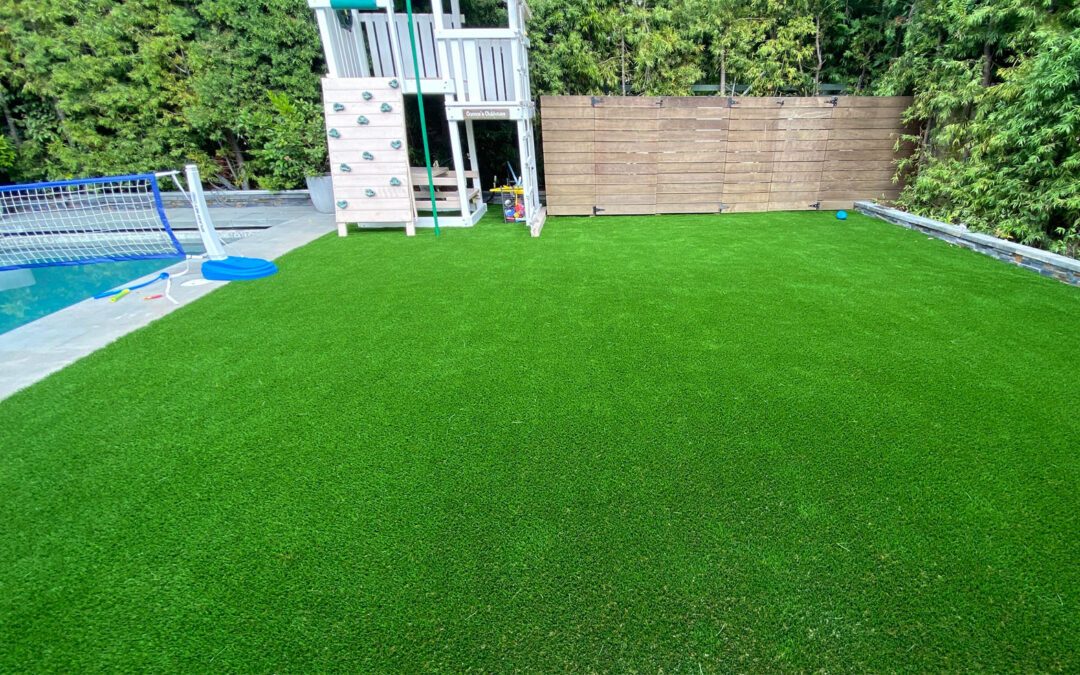Artificial grass, also known as synthetic turf or fake grass, has become a popular choice for residential lawns, commercial landscapes, and sports fields due to its low maintenance and year-round green appearance. Even though artificial grass takes less maintenance than natural grass, it still needs to be done on a regular basis to maintain its appearance and longevity. Here are some helpful hints for maintaining artificial grass, whether it’s on a commercial property or in your backyard:
1. Regular Cleaning
Cleaning artificial grass on a regular basis to get rid of dust, debris, and organic matter is important. To remove leaves, twigs, and debris from the surface, use a plastic rake, stiff brush, or leaf blower. Debris keeps the turf looking natural by not becoming crushed into it when it is regularly removed.
2. Rinsing
The artificial grass should be periodically washed with water to get rid of dust, pollen, and other flying debris. The grass blades can be kept clean and straight by using a garden hose fitted with a mild spray attachment to remove dirt. In hot weather, rinsing the lawn also aids in cooling it down.
3. Stain Removal
To stop stains from penetrating the grass strands, treat them right away. To clean spills and pet stains, use a vinegar-water solution or a light detergent. Steer clear of bleach and other abrasive agents as they may harm the artificial grass.
4. Grooming
Using a stiff-bristled brush, regularly groom the artificial grass by sweeping the strands. This keeps the grass appearing lush and natural, prevents matting, and redistributes the infill material. To elevate the fibers and keep them standing upright, brush against the grain.
5. Weed Control
Most high quality artificial grass have a built in weed barrier. Keep an eye out for any indications of weeds along the edges and seams, and get rid of them right once. Preventing weed infestation can also be achieved by applying a weed killer made especially for artificial turf.
6. Pet Waste Management
If you have pets, get rid of the solid waste right away and give the area a water rinse. To eliminate smells and disinfect the lawn, use enzyme-based cleaners or synthetic grass deodorizers. To keep pet play places clean, rinse and disinfect them on a regular basis.
7. Avoid Sharp Objects
To avoid damaging the turf fibers, keep pointed items off the fake grass, such as tools, furniture legs, and high-heeled shoes. Under heavy furniture, place protecting pads or mats to disperse weight uniformly and reduce indentation.
8. Inspect for Damage
Examine the fake grass frequently for indications of deterioration or wear. Check for excessive matting, worn-out patches, and loose seams. In order to stop additional degradation, replace or repair damaged areas right away.
9. Proper Drainage
Make sure there is enough drainage on the artificial grass to avoid water buildup. To keep the drainage system operating at peak efficiency, especially in locations that frequently experience heavy rainfall, clear out any debris or obstructions.
10. Professional Maintenance
When it comes to extensive cleaning, infill replacement, and repairs, think about using professional fake grass maintenance services. Expert technicians possess the knowledge and specialized tools necessary to guarantee the long-term resilience and appeal of your artificial grass.

